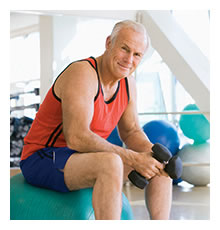
06 Jul Exercise and Healthy Longevity (Yoga in Hounslow)
As many of you know, I have been following the Longevity Diet for over 5 months now. I am documenting my fat loss journey on YouTube in my Dean’s Diet Diary videos. www.youtube.com/c/sefalisyoga
In chapter 5 his book “The Longevity Diet”, Dr Valter Longo outlines how to optimise your exercise for better health and longevity. Below is the opening of the chapter in which he tells us about what we can learn from those aged 100+.
A Lesson from Centenarians
“In general, those who reach age one hundred in good health have stayed active or very active into old age. There are of course exceptions. If you look at centenarians, or even just within your own extended family, you will likely find someone who beat the odds: eating whatever they wanted, seldom exercising, yet making it to a ripe old age.
There is nothing we can do about our genes. But after making changes in the diet, the second major factor affecting lifespan is physical activity.
In Okinawa, I heard stories of fishermen who never retire, and I watched a woman in her nineties dance with a large bottle on her head, something she did many times a week. When she wasn’t dancing, she enjoyed playing traditional
Japanese musical instruments. In Calabria, 110-year-old Salvatore Caruso toldme how he walked every day to the oliveto (olive grove) and how much labor hisolive trees required.
In Loma Linda, the very long-lived Seventh-day Adventists are famous for their high levels of exercise, including walking fast and going to the gym. When Dan Buettner asked very long-lived Costa Ricans to share the secret to their longevity, they said they enjoyed doing physical work all their lives.
When I posed the same question to the shepherds of towns with famously long-lived populations in Sardinia, they told me that every year they left their homes around November so they could walk their sheep to lower elevations and warmer areas, where the animals can find food, and they didn’t return until April or May.
What physical activity is best for healthy longevity? The one you enjoy most, but also the one you can easily incorporate into your daily schedule and the one you can keep doing up to your hundredth birthday and beyond.
Many Okinawans practice martial arts, especially a dance-inspired version of tai chi. The type of exercise you choose isn’t important. What’s important is working all your body parts until you breathe rapidly and sweat for five to ten hours a week.
I’m not talking about running weekly marathons. Overworking your body is not a good idea. If you consider the “complex systems” pillar described earlier and think about a car, why is it that no one wants to buy a five-year-old car with one hundred thousand miles on the odometer?
Because despite being relatively new, it has been driven too much. You can replace the tires and repaint the chassis, but you cannot change every belt, hose, and valve, and there’s a high chance that some overworked component will break down. On the other hand, you don’t want to leave your car parked in the garage most of the time, as this will also eventually cause it to break down.
The same holds true for the human body. It’s important to exercise, but not to overexercise, because knees, hips, and joints will eventually get damaged— particularly if you continue to exercise when you feel pain. On the bright side,
certain exercises and diet can cause tissue to self-repair and regenerate, so the human body has built-in advantages over a car.”
As Dr Longo states, certain exercises can help our bodies self-repair and regenerate. That’s why Sefali’s Yoga places so much emphasis on corrective exercises. We want to exercise to build our bodies up not break them down!

No Comments